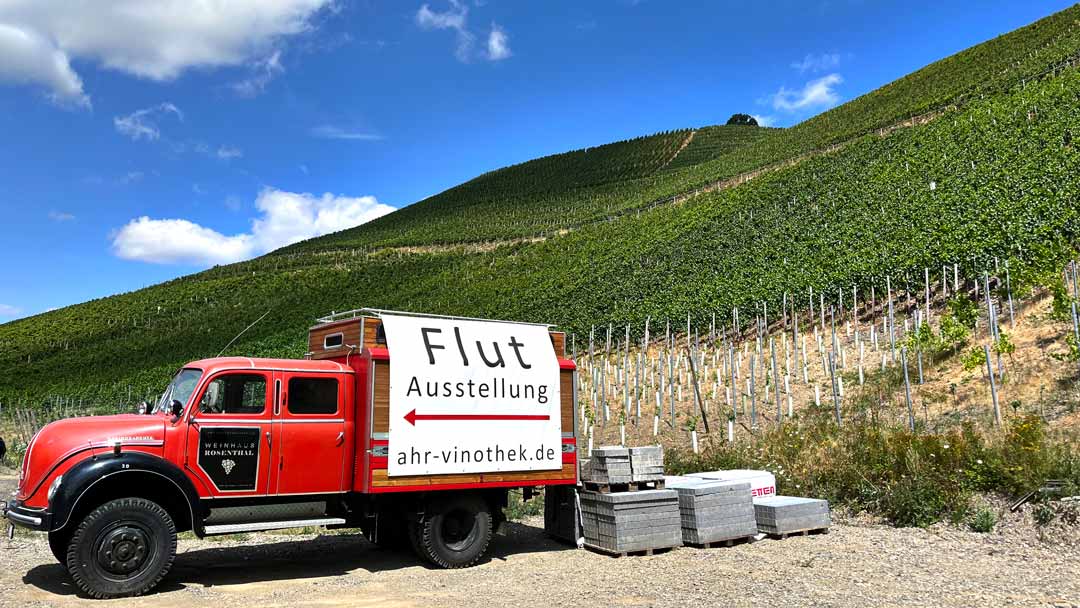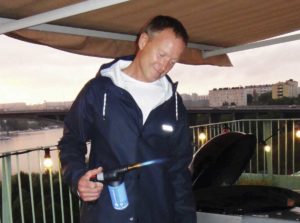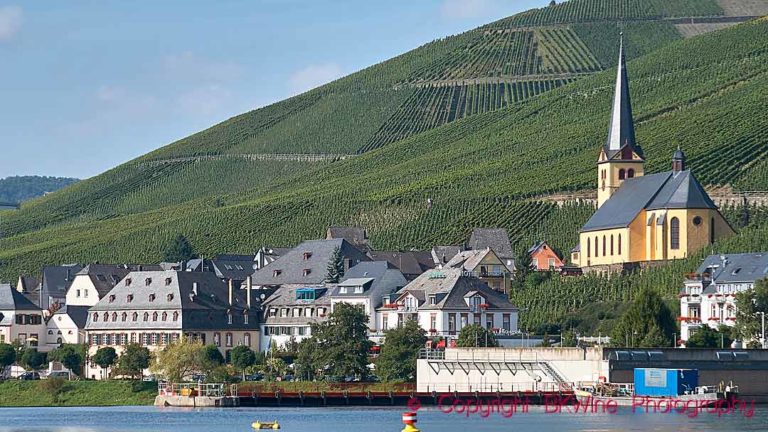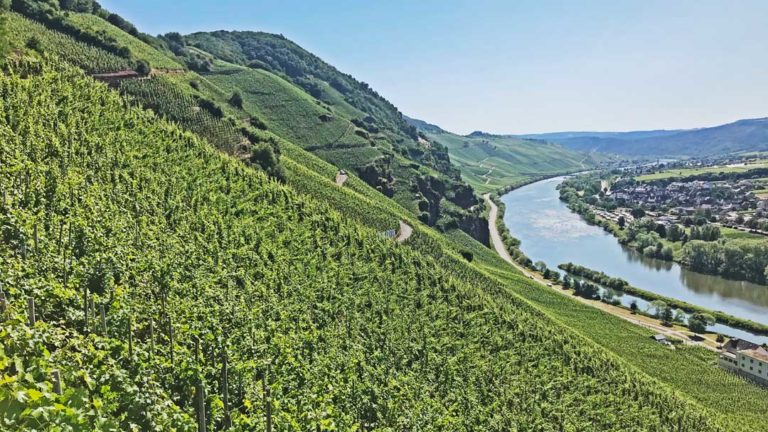During one afternoon in July 2021, 132 people died from a downpour from hell that hit Ahr. In a few hours, the water rose to the villages, and those who did not have time or strength to climb onto roofs or steep slopes were subjected to horrific ordeals.
Today (July 2023), exactly two years after the disaster, one still cannot take a step without being reminded of the horror that took place. Sixty-two bridges were torn apart, 50,000 cars were destroyed, houses had demolished lower floors, and colour changes high up on many facades.
Even though years of production were wasted in the flooded cellars, the vegetation on the steep slopes did well. The vines shook off the drops as if nothing had happened, and when harvested, fine fruit hung under the foliage.
Ahr is a tiny and rather overlooked district. How many northerners have not rushed past on the Autobahn on their way to the Mosel or – a little to the west – Alsace? The region may not warrant a handbrake turn for its riesling but well for its pinot noir or spätburgunder, as most winemakers still choose to name it on the label.
Our journey started when the wine writer Magnus Waern, at home in Stockholm, snuck a bottle from Ahr in a blind tasting—neat, stylish, clear pinot signals and exceptionally good. Six months later, we rolled into the first stop at Weingut Paul Schumacher. We wanted to know more, and there is hardly a better way than to make a visit on-site (Ed: Travel to the wine regions with BKWine to really discover the wine!) This building was also affected by the flood two years ago. The facade was mud-coloured in a beige tone up to the upper frame of the garage door. It is absolutely horrifying to imagine the chaos that prevailed during the downpour.
Paul appeared in work clothes and showed us into the tasting room as well as the workshop, warehouse and garage. We got our glasses on the workbench after moving an angle grinder and some wrenches. The bottles were rooted out a little sporadically from cartons up on the pallet racks, in stark contrast to the afternoon’s visit to Deutzerhof’s clinical reception room with bottles lined up with millimetric precision. Our guess, we chose not to ask, was that Paul Schumacher’s tasting room had not yet recovered from the damage. In addition, we really enjoyed ourselves there in the garage.
Without delving into notes about each wine, a good summary is that they are delicious, dense and quite powerful wines. A rustic elegance if that word combination is possibly linguistically permitted. Old vines and an explicit philosophy to keep the harvest yields down are noticeable in the glass.
Please remember the producer, but for all the world, don’t miss Paul Schumacher’s wife’s “pop-up restaurant” high up on the mountain directly above the village, in a meadow in all its simplicity with comfortable garden furniture and parasols displayed in charming disarray. Our mountain bikes were parked against a cow fence. The summer heat was draining us, and a cold beer was called in before we even took off our helmets. “Beer”, said the waitress, looking at us in wonder. “There is no beer here”, she continued with an easy obviousness and left the wine list with all of Schumacher’s wines. Leaning back in our deckchairs with a glass of Paul Schumacher 2020 Marienthaler Trotzenberg Sekt, we definitely didn’t miss the previously much-anticipated beer. The kitchen was housed in a makeshift container accompanied by a young guy positioned next to a fragrant charcoal grill. The small dishes served would prove to be one of the best culinary experiences of the trip.
Paul Schumacher does not use an iota of added yeast, which would prove to be synonymous with all the producers we spoke to. Unlike so many other districts we visited, no producer in Ahr had an ounce of self-righteousness when their own production was highlighted. On the contrary, we were struck by an unusually coherent approach to harvesting, pressing, vinification and ageing. Broadly speaking, perhaps it should be added at least at Deutzerhof, Adeneuer, Erwin Riske, Stodden and the aforementioned Paul Schumacher, whom we managed to meet.
In the car going home, there was a much larger batch of wine than planned. Unfortunately, the lack of space was a limitation on the trip’s last stop, Champagne, which, on the other hand, spared the account from being cleared. Back home, it was time to try the wines with my drinking friends at the wine-tasting association Auzone. My uncertainty about the interest was put to shame when the 13 seats were booked in seconds. Among these wine geeks, everyone knew where the district was, and that spätburgunder was the reigning grape. But few had much experience, and no one had been to a tasting with only wines from Ahr.
Surprised by the interest, a tasting was also arranged for 40 people in the wine-tasting association Munskänkarna’s Stockholm section. Here, all the places were gone within five minutes.
But how is it then that there are so incredibly few bottles from Ahr at Systembolaget, the Swedish monopoly? A qualified guess is that it is, in short, a tiny district with a paltry 564 hectares compared to the whole of Germany’s approximately 100,000 hectares. The producers mentioned above have between five and thirteen hectares at their disposal, which makes it next to impossible to end up on the shelves here at home at the monopoly shops.
Of the production, 90% is spätburgunder, while the other 10 per cent includes frühburgunder, weissburgunder, grauburgunder, dornfelder, riesling and a few other goodies. The prices of the quality wines cannot be described as low, although if compared to Burgundy, they are pure bargains. On the other hand, we can safely say that their sparkling wines were a bargain in relation to the quality. Nothing that is put on the tables for the tastings, but everyone has one or two of them in their repertoire. Quite a few are made from pure spätburgunder, of course. Don’t miss them. Also, don’t miss cycling between winery visits. Since the bridges on the map were not always still standing, the valley’s 25 kilometres were equipped with alternative small roads to avoid car traffic. Make a stop here on your next trip, and you’ll be sure to find a new topic of conversation at the dinner table when you get home.
Editor’s note:
Another reason to buy some wines from Ahr is to support this region that is still recovering from the floods in 2021. It is hard to fathom the mayhem the deluge of water caused, the lives lost, the billions of damage caused. The video below is “one year later” and rather long, but already in the first few minutes you see some impossible to comprehend images.
















